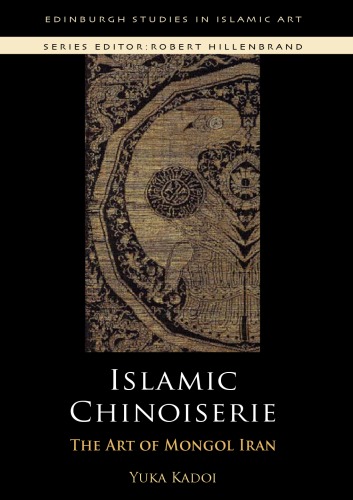

Most ebook files are in PDF format, so you can easily read them using various software such as Foxit Reader or directly on the Google Chrome browser.
Some ebook files are released by publishers in other formats such as .awz, .mobi, .epub, .fb2, etc. You may need to install specific software to read these formats on mobile/PC, such as Calibre.
Please read the tutorial at this link: https://ebookbell.com/faq
We offer FREE conversion to the popular formats you request; however, this may take some time. Therefore, right after payment, please email us, and we will try to provide the service as quickly as possible.
For some exceptional file formats or broken links (if any), please refrain from opening any disputes. Instead, email us first, and we will try to assist within a maximum of 6 hours.
EbookBell Team

4.0
6 reviews
ISBN 13: 9780748635825
Author: Yuka Kadoi
The Mongol invasion in the thirteenth century marked a new phase in the development of Islamic art. Trans-Eurasian exchanges of goods, people and ideas were encouraged on a large scale under the auspices of the Pax Mongolica. With the fascination of portable objects brought from China and Central Asia, a distinctive, hitherto unknown styleIslamic chinoiseriewas born in the art of Iran.
Highly illustrated, Islamic Chinoiserie offers a fascinating glimpse into the artistic interaction between Iran and China under the Mongols. By using rich visual materials from various media of decorative and pictorial artstextiles, ceramics, metalwork and manuscript paintingthe book illustrates the process of adoption and adaptation of Chinese themes in the art of Mongol-ruled Iran in a visually compelling way. The observation of this unique artistic phenomenon serves to promote the understanding of the artistic diversity of Islamic art in the Middle Ages.
Chapter 1: Textiles
This chapter focuses on the influence of Chinese textile designs, such as dragons, phoenixes, and cloud patterns, on Iranian textiles.
Chapter 2: Ceramics: The Notion of chini-i-faghfuri
This chapter examines the impact of Chinese ceramics, including techniques and motifs, on Iranian pottery production, including the famous blue-and-white porcelain and celadon wares.
Chapter 3: Metalwork and Other Miscellaneous Objects
This chapter covers a range of other art forms, including metalwork, glass, lacquer, and stone objects, and how they adopted and adapted Chinese themes and styles.
Chapter 4: Manuscript Painting 1
This is the first of three chapters dedicated to manuscript painting, a major focus of the book. It likely covers early examples of Chinese influence in book illustration, focusing on the adoption of specific motifs and stylistic elements like landscape, water, and animals.
Chapter 5: Manuscript Painting 2
This chapter continues the discussion of manuscript painting, possibly focusing on the stylistic development and the integration of Chinese elements into Persian painting traditions, perhaps with a focus on specific workshops or periods.
Chapter 6: Manuscript Painting 3
This final chapter on manuscript painting likely delves into the masterpieces of Ilkhanid manuscript production, such as the Jami' al-Tawarikh of Rashid al-Din, and analyzes how Chinese influence reaches its peak in these works. It also mentions the "Diez Albums," which are a significant source of material.
Conclusion
This chapter summarizes the findings and provides a broader perspective on the significance of Islamic Chinoiserie in the history of Islamic art and cross-cultural artistic exchange.
islamic chinoiserie
what is chinoiserie art
what is chinoiserie style
is chinoiserie cultural appropriation
what is chinoiserie
Tags: Yuka Kadoi, Islamic, Chinoiserie